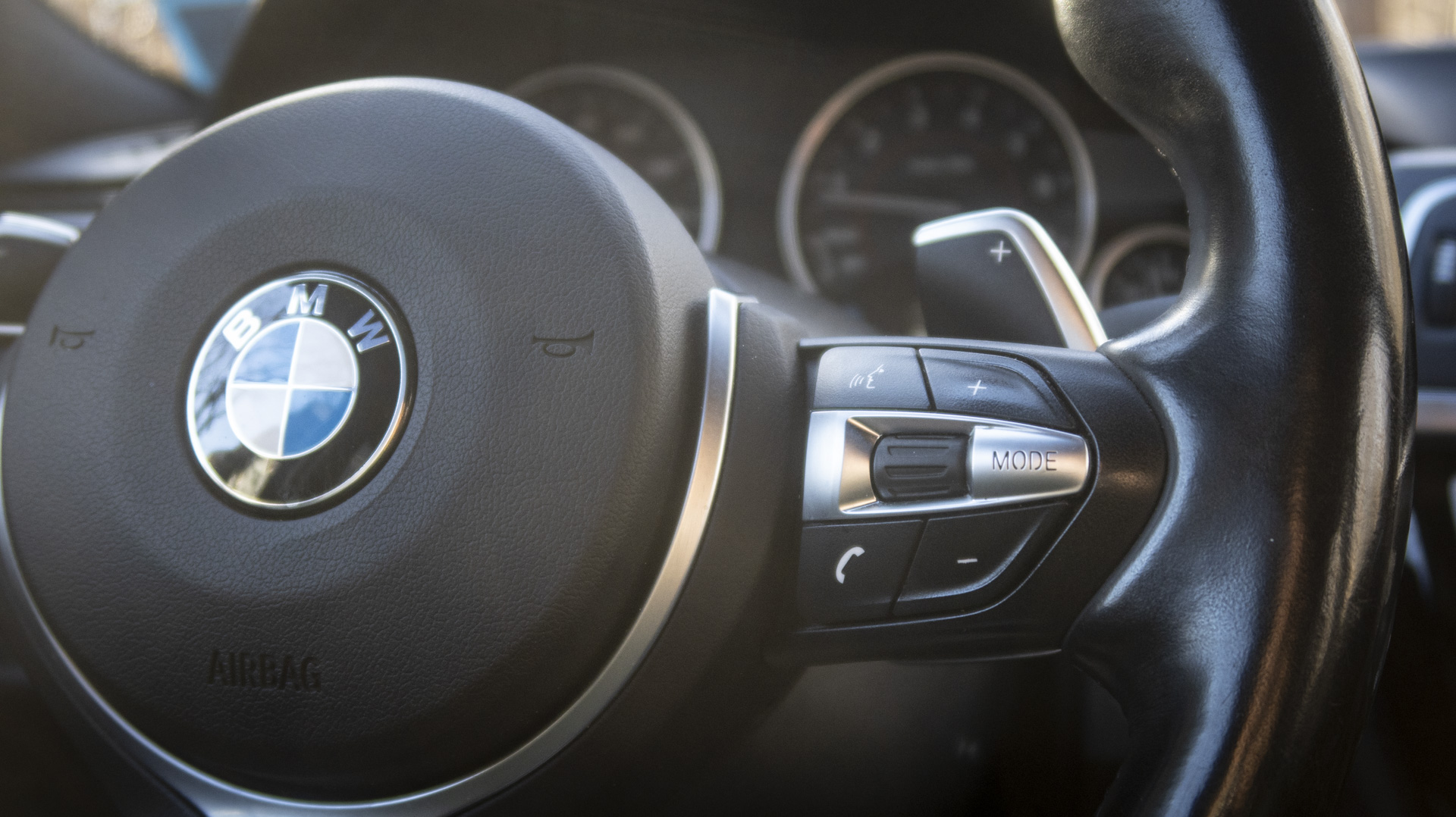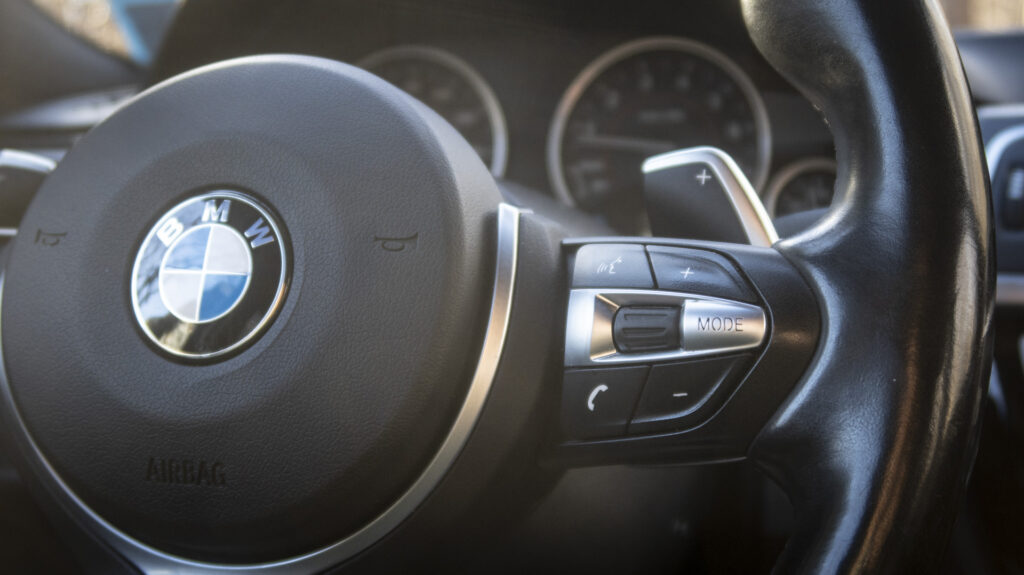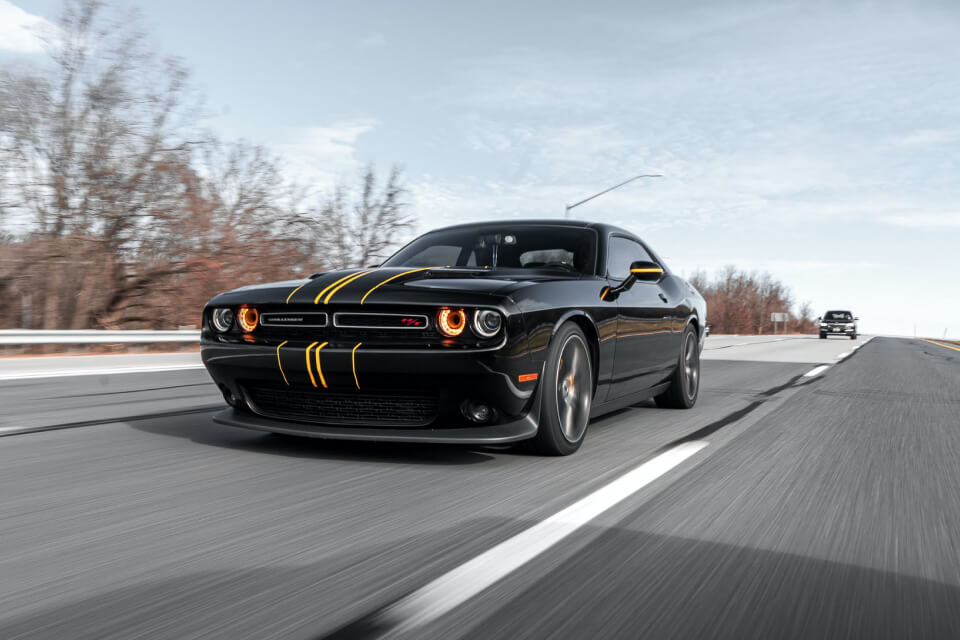
My wife and I have an F31 (mid-2010s) BMW 3 Series station wagon that we like a lot. It’s comfortable, cool looking, decently engaging to drive, and not terrible on fuel consumption. We’ve had it for about a year and I really only have one big complaint: The steering wheel stereo controls are designed in a way that is so bad and yet so close to being good. It’s very frustrating!
I am aware of the pettiness of this blog, but look, this travesty of human-machine interfacing must be brought into the light. There is no way I’m the only BMW driver who’s observed that the steering wheel stereo volume buttons and track selector rocker switch functions really, truly, ought to be reversed.
Then again, maybe I am the only one. BMW has continued to use this layout in its current generation of vehicles. Am I so out of touch? No, surely, it’s the engineers and thousands of other customers that are wrong. Jokes aside, I’ll lay out my beef with BMW’s control configuration and let you decide if my rage is justified here.
So on the right spoke of the steering wheel, you’ve got a bank of thumb-toggle controls. OK, pretty standard. There’s a roller control, like a little log you spin with your thumb, and +/- buttons. Here is where my grievance lies—the roller is used for track selection, while the buttons control volume. This, to me, is madness.
Track selection is usually done one step at a time, right? When I’m ripping through whatever playlist on shuffle, I like to hear a few notes and then skip to the next song if I’m going to skip. A button is perfect for this. This is how BMW did it in the E90 and E46 generations ahead of my F3X-series car—the rolling log control wasn’t around until that 2010s era and has stuck around since.
Volume, however, I almost never adjust in singular increments. I’m either turning music on, off, way up, or way down. I’m not tweaking it by one notch at a time like I’m trying to optimize a sound effect in a video editing studio. The roller could do this job almost as well as the knob at the left of the infotainment system, which of course, is the gold standard in volume adjustment.
But that’s not how BMW does it. To go forward a track in my ’17 330i, I need to move the rocker down just one notch, until I see a square highlight around a “next track” icon on the dashboard. Then I need to click the rocker in to accept. That’s two and a half steps (looking at the screen is the half-step) for a task that could and should be a single button push.
My theory is that this is a holdover from radio being the preferred method of in-car entertainment. On FM radio mode, which I’ve used exactly once since buying this car, you scroll through all your presets using this toggle wheel. In that instance, being able to move quickly through a bunch does make sense. But I stand by the assessment that this is a job best suited for buttons.
I know, it’s not really that big of a deal either way. But I think about it every time I drive the car, and I just gotta know if anybody else is out there pulling their hair out like Ryan Gosling in that Papayrus skit over this inconsequential annoyance.
Have any human/machine interface issues of your own to share? Hit up the author at andrew.collins@thedrive.com.


